The Impact of Childhood Trauma and How Parents Can Heal Together
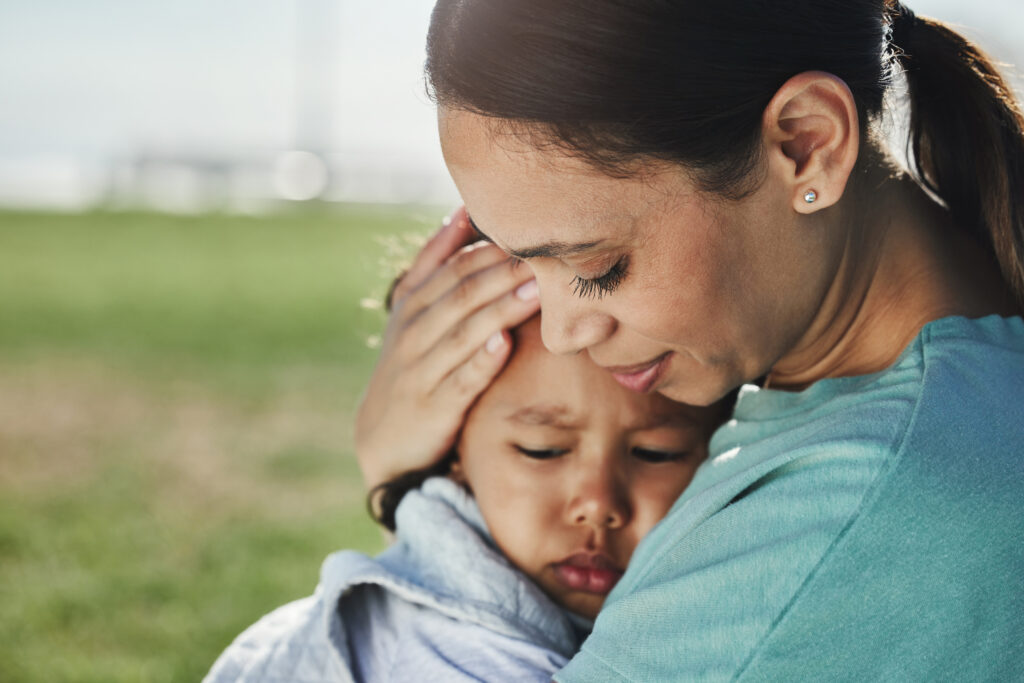
As a Child Development Specialist, Time and time again, I’ve seen one thing holds true: childhood trauma doesn’t just disappear—it stays with you. It is often quiet. But it can adversely affect how you act, how you love, and how you feel as a grown-up. If it’s not healed, it can surface in the way you parent your child, but here’s the good news: you can heal, and you don’t have to do it alone. Here, I want to look at how childhood trauma can affect a family. We will see how mindful parenting and conscious co-parenting can help us heal. We can work through it together, as a team. 1. Understanding How Trauma Shapes Our Parenting The difficult things in your past aren’t always obvious or easy to spot. It can be when no one understands your feelings. Or being told to hold back your deepest emotions or to act a certain way.” These small things can make a child feel not seen and not safe. When you are a grown-up, this can make you: In my work with families, we look at how your inner child affects the way you parent today. The first step is to understand each action. This helps you be the conscious parent. That is a parent who acts with thought, not just out of habit. 2. Healing as a Team Through Conscious Co-Parenting Regardless of whether you are in the same place or not. When you heal as a team, you make a safe place for your child. Conscious co-parenting is when both parents try to be there. They are aware of feelings and act on them. You do not have to be an expert. But you do need to talk, care, and work with each other. Here is how you can start: This way of doing things is closely associated with Conscious Co-Parenting NJ. New work in Holistic Child Development shows it is good. A 2023 study found that children in homes where feelings are acknowledged have 33% fewer behavioral problems. They also do better in school. 3. Rebuilding Safety Through Mindful Connection When past experiences have pushed you away from people, closeness can help you heal. Mindful parenting is when you show up for your child each day; you’re also showing up for yourself. It looks like this: When you show your child how to be in tune with their feelings, they’ll carry that skill for life. They learn to guide their feelings. This is how we raise kids to be wise with their feelings, and it starts at home. The benefits of mindful parenting for child development are more than just how they act. It makes them think in new ways. It helps them deal with difficult times. And it helps them develop a sense of safety around you. Conclusion: Healing Begins With Awareness It’s not easy to parent when you carry past trauma, but it’s some of the most rewarding work you’ll ever do. Choose to grow, not to feel bad. Then you will be the conscious parent your child needs. You can become the healed adult your younger self needed. Tip: Make a “calm corner” in your home for all of you. It is a place you and your child can go when feelings seem uncontrollable. Include calming items soft blankets, favorite books, or quiet songs, so you both know it’s a safe place for emotions. Don’t forget to follow us on Instagram, and YouTube for more insights and expertise.For the latest news and updates, click here to view our recent press releases.
How to Build a Strong Emotional Bond With Your Child

A child feels safe when there is a link to you. As a child development specialist, I know this to be true: strong bond are built in the small, everyday moments—not just the big ones. The bedtime talk. It’s in the moments when we stop and truly listen to them. The small things we do time and time again that say, “I see you.” I LOVE YOU.” Parenting can be really difficult at times. In the first years filled with all sorts of toddler activities, spilled food, and big feelings, this might feel like a lot. But a good link does not ask you to be perfect. It asks you to be present. Here is how you can start growing a strong bond with your child today. 1. Make Time to Be Close Every Day In our fast-paced world, it is really difficult to slow down. But a bond grows through planned, repeated times of being close. I call them “feeling check-ins.” These can be simple things like: These moments create a sense of safe, steady love and build trust over time. They can also help with holistic child development, where a child’s heart, mind, and way of communicating with others all grow at the same time. When life feels overwhelming, start with one daily habit that matters most. It could be a song you sing in the shower or “finish your child’s day on a note of gratitude. At bedtime, gently invite them to share something they’re glad about. It could be a small win. 2. Here to Know, Not to Fix Children don’t always need us to fix their problems — sometimes, they just need to feel truly seen, heard, and understood. Instead of: “You’re fine, it’s not a big deal,” Try: “That made you feel very sad, didn’t it? I’m here for you.” This approach, inspired by nonviolent communication, is a beautiful way to strengthen your bond with your child. It’s about letting them know their feelings are welcome And so? Kids feel safe in their feelings. They are more ready to open up. This is one of the key benefits of mindful parenting for child development—kids learn to understand their feelings and get to know themself when you are there for them. 3. Guide with Care, not Fear To guide is often not seen with the right perspective. It means “to teach,” not “to punish.” Using positive discipline strategies for toddlers means you set clear rules with warmth and care. For example, “It’s okay to be mad, but it’s not okay to hit.” Let’s take deep breaths as one.” This way it fits with the idea of conscious parenting—“A mindful parent is someone who notices what’s driving their reactions, takes a pause before responding, and chooses to lead through their own example. This is especially important when parents live in two different homes. When you deal with intense emotions or fights, leading with a kind heart builds credibility. That is where the strongest bonds reside. Real-time insight A 2024 U.S. study found that children who felt emotionally close to at least one parent were 42% more likely to excel in school and 52% more likely to resolve conflicts with friends without harm That is the true power of a close bond. It sets your child up for a life by filling their hearts with strength and resilience. Conclusion: The Strong Bond Starts with You It’s not about doing everything perfectly; it’s about being there, time after time. Tip: Make a “bonding jar.” Put small pieces of paper in it through small, everyday actions that build closeness. Like reading a book, looking at the stars, or performing a toddler activity like sorting things by color. Let your child pick one each day. It is fun and a valuable lesson. The path of mindful parenting continues. Together, keep learning, bonding, and growing. Don’t forget to follow us on Instagram, and YouTube for more ideas. For the latest news, click here to view our recent press releases.
How to Help Your Child with Big Feelings and Not Act Fast
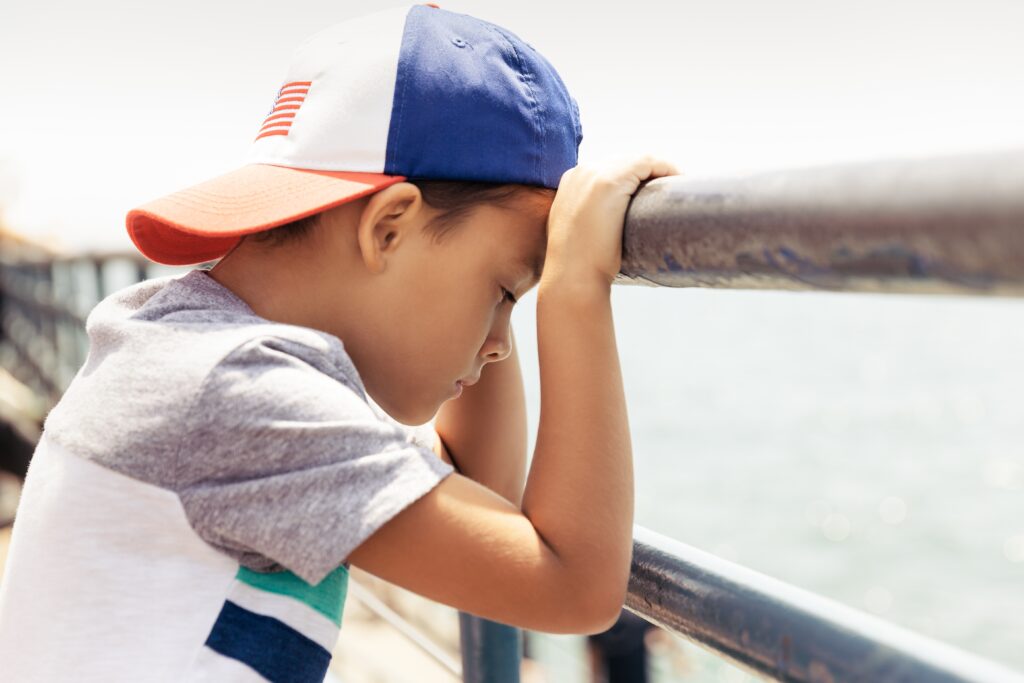
If you are a parent, you have seen all of your child’s feelings. Tears for the wrong bowl. Being upset at bed time. Or mad when they have to share. In those hard times, it is easy to act fast. But what if you chose to help, not just act? As a Child Development Specialist, I have helped many parents in the U.S. and other places use mindful parenting. This way helps you be calm even when your child is not. I will show you how to deal with your own feelings and help your child with their big feelings. This helps you both feel close and helps with emotional regulation. 1. Pause First, Act Later It may sound easy, but to pause first is a big help. Big feelings can come from a need. They may be hungry or tired. Or there is too much going on. When a child’s head is full of big feelings, they can’t think well. They need to feel safe and close to you. As the conscious parent, your job is not to fix the feeling. Your job is to be calm with them. Try this: Put your hand on your heart when your child is upset. Count to five in your head. This can help calm your body down so you can show them how to be calm. 2. Show You See, Don’t Make It Small Did you ever say, “It’s not a big deal”? Then the big feelings got worse. That is because to them, it is a big deal. Active Listening Parenting is when you say back what your child feels. You can say it even if the feeling seems too big. This is the base of Nonviolent Communication. You show you see their feeling. You don’t make them feel bad or wrong now. You teach your child that feelings are okay. You show them it is safe to show how they feel. This helps with emotional regulation kids can learn for life. 3. Make Rules with Love Being kind does not mean there are no rules. Kids do well when they have rules, more so when rules are set with love. Example: “It is okay to be mad, but it is not okay to hit. Let’s use our words or take a break.” This is part of positive discipline strategies for toddlers. You teach, not punish. You are still the conscious parent. You lead, but you don’t force. Over time, this makes Holistic Child Development. They learn about feelings, and they learn to care, talk, and be strong. A Look at Parents Now A 2023 report from the American Psychological Association said that 7 out of 10 parents in the U.S. say they act on their feelings in hard times with their kids. But kids whose parents are calm and kind have been shown to feel good about who they are. They do better in school. They are good with other kids. That is the real power of how to implement conscious parenting techniques at home. It is not just for now. It is for how they grow and feel for a long time. To End: Helping is the New Way No one is a perfect parent. We all have times when we use a loud voice or feel it is all too much. But each time you are close is a time to teach your child. You can teach them that feelings are not to be feared. They are for us to know more. Tip: Put a “Feelings Chart” on your fridge. It helps your child name their feeling. It gives you a picture to help you start a calm talk. Don’t forget to follow us on Instagram, and YouTube for more ideas and help to raise kids who are smart about feelings. For new news, click here to see our new press releases.
How to Really Listen to Your Child: The Art of Conscious Communication

Are you ever busy with a job—like making food or work—when your child comes to tell you a big thing? You nod and say “uh-huh,” but their eyes stay on you. They wait for you to really look at them. That look is a sign. Your child does not just want to talk. They want to be heard. As a Child Development Specialist, I see now that one of the best gifts we can give our kids is our full time and care. To give your time and care is not just to be in the same room. It is to join in with Active Listening Parenting, show you see their feelings, and use what I call Conscious paranting. Here, we will look at how to be the conscious parent. A parent who listens with care, gives kind words back, and builds a life of trust with their child. 1. Listening Is More Than Hearing Hearing just happens. Listening is work. It is to use your ears, eyes, and heart. When your child talks, do you look at them? Do you stop what you do? Do you show that you see how they feel? Like this: “You look very sad your toys fell. That must feel bad.” That is Nonviolent Communication. You show you see their feelings. You do not judge or fix them. This is a key part of mindful parenting. With it, your time and care mean more than being right. Life shows that kids who feel heard have a good hold on their feelings. They can also work out hard things as they grow up. This is called Emotional Regulation. 2. Ask, Don’t Tell When your child tells you a thing—a big thing—you may want to give help or fix it. But most of the time, they just want you to know how they feel. Try to ask questions that need more than a yes or no: This lets them talk more. It helps them find words for their feelings. This is a main part of Holistic Child Development. In Family Meeting times I have led, parents who do this all the time see a big change. Their kids talk more and end fights in a good way. It is also a key rule for conscious co-parenting like we teach at Vedangi Brahmbhatt. 3. Make Times to Talk Some of the best talks can be had in day-to-day life. It can be in the bath, in the car, or when you make food. These are good times for Toddler Activities. You can add set times to check in. One way is to ask for one good thing and one hard thing from the day. These small habits can help all kids share more. They show the benefits of mindful parenting for child development and help kids feel safe. Tip: Make a “listen time” for 5 minutes each day. Your child talks and you just listen. Do not stop them, give help, or do other work. It is a very good thing to do. Real-Time Insight: A new look at life in 2024 shows that homes that use listening and kind talk each day have far less bad ways of acting out. This shows how to implement conscious parenting techniques at home is not just an idea—it brings a very big change. Conclusion: A Tool for Life Kids do not need us to know all the things. They need us to be there for them. To make space for their big questions, what they fear, and their joy. When we use conscious communication, we build trust. We help them feel good about who they are. We help them be strong inside. Parenting Tip: When feelings are big, try to say their words back to them. It shows you love them and are with them. It helps them to keep on with their story. Don’t forget to follow us on Instagram, and YouTube for more on mindful parenting and conscious communication. For the latest news, click here to view our recent press releases.
How to Respond to Your Child’s Big Emotions Without Reacting

If you’re a parent, you’ve probably witnessed the full spectrum of your child’s emotions—tears over the wrong cereal bowl, frustration about bedtime, or anger when asked to share a toy. And in those heated moments, it’s tempting to react. But what if, instead of reacting, we responded with intention? As a Child Development Specialist, I’ve guided hundreds of parents in the U.S. and beyond to embrace mindful parenting—an approach that empowers you to show up with calm even when your child can’t. In this blog, I’ll share how to manage your own triggers and respond thoughtfully to your child’s emotional storms, promoting connection and emotional regulation for both of you. 1. Pause First, React Later It might sound simple, but pausing before responding is one of the most transformative parenting tools. Big emotions often stem from unmet needs, hunger, fatigue, or overstimulation. When a child’s brain is flooded with emotion, they aren’t ready for logic or lectures. They’re looking for safety and connection. As the conscious parent, your job isn’t to fix the emotion—it’s to be a calm presence during it. Try this: Place your hand on your chest when your child is upset and silently count to five. This grounding technique helps regulate your nervous system so you can model calm. 2. Validate, Don’t Minimize Have you ever said, “It’s not a big deal,” only to watch your child’s tantrum escalate? That’s because, to them, it is a big deal. Active Listening Parenting involves reflecting your child’s feelings, even if they seem exaggerated. This is the foundation of Nonviolent Communication—validating without shaming or correcting right away. You’re teaching your child that emotions are okay, and that they are safe to express them. By doing this, you promote emotional regulation kids can internalize for life. 3. Set Boundaries with Empathy Responding with compassion doesn’t mean being permissive. Children thrive on boundaries, especially when set with love. Example: “You’re allowed to be angry, but it’s not okay to hit. Let’s use words or take a break.” This approach aligns with positive discipline strategies for toddlers—teaching without punishment. You’re still the conscious parent, but you’re guiding instead of controlling. Over time, this creates Holistic Child Development, where emotional intelligence grows alongside empathy, communication, and resilience. Real-Time Parenting Insight According to a 2023 report from the American Psychological Association, 70% of parents in the U.S. admit to reacting emotionally during conflicts with their children. However, children whose parents consistently respond with calm and empathy are shown to have higher self-esteem, improved school performance, and better peer relationships. That’s the real power of how to implement conscious parenting techniques at home—it’s not just about the moment; it’s about long-term emotional development. Conclusion: Responding is the New Reacting No parent is perfect—we all have moments when we raise our voices or feel overwhelmed. But each moment of connection is a chance to teach your child that emotions are not something to fear, but something to understand. Tip: Keep a “Feelings Chart” on your fridge. It helps your child identify what they’re feeling, and it gives you a visual cue to help start a calm conversation. Don’t forget to follow us on Instagram, and YouTube for more insights and expertise on raising emotionally intelligent kids. For the latest news and updates, click here to view our recent press releases.
Helping Your Child Develop Self-Regulation Skills

We’ve all been there—your child is mid-meltdown in the grocery store aisle, or maybe they’re lashing out at a sibling after a long school day. It’s in these challenging moments that the magic of self-regulation can make all the difference. And while emotional control may not come naturally to kids (or adults!), it is a learned skill—and one that begins at home. As a Child Development Specialist, I often remind parents that our job isn’t to create perfect children, but to model and guide them toward emotional intelligence. In this blog, we’ll dive into what self-regulation really means, why it’s essential, and how to help your child build it in everyday life. 1. Start Early with Routine & Predictability Self-regulation is the ability to manage one’s emotions, behavior, and energy levels in response to a situation. It begins with a sense of structure and security. a. Use Toddler Activities to Teach Patience Simple games like “Simon Says” or puzzles teach children to wait, listen, and follow directions. These fun exercises lay the foundation for impulse control. b. Schedule Regular Family Meetings Carve out time each week to talk about feelings, conflicts, and achievements. Giving kids a voice helps them name their emotions and feel validated, while reinforcing routines and mutual respect. c. Consistency Creates Calm Children thrive on predictability. Mealtime routines, bedtime rituals, and morning check-ins are all gentle ways to reinforce calm and prepare them to self-regulate during transitions. 2. Be a Role Model of Regulation Whether we like it or not, our children are always watching. How we handle stress teaches them how to handle theirs. a. Embrace Mindful Parenting Take a deep breath before reacting. Pause when you’re angry. These simple acts show children that emotions are okay, but so is slowing down to respond thoughtfully. b. Practice Nonviolent Communication Instead of “Stop yelling,” try “I hear you’re upset, let’s talk about it calmly.” Language shapes reality. Reframing correction with kindness helps teach your child better coping strategies. c. Encourage Active Listening Parenting When your child is venting, resist the urge to interrupt or problem-solve right away. Just listen. You’d be surprised how powerful your undivided attention can be in de-escalating big emotions. 3. Teach Regulation Through Connection Children learn to regulate when they feel connected, seen, and safe. a. Build Skills with Play Games that involve waiting turns, following rules, or role-play (like doctor or restaurant) encourage empathy and cognitive control—cornerstones of emotional regulation kids need. b. Promote Holistic Child Development Focus on the whole child—emotionally, socially, and cognitively. Sleep, diet, physical activity, and safe relationships all contribute to a child’s ability to regulate themselves. c. Explore Resources Like Best Parenting Books Books like “The Whole-Brain Child” or “No-Drama Discipline” offer evidence-based techniques that align with how to implement conscious parenting techniques at home and support positive discipline strategies for toddlers. Real-Time Insight According to the CDC, children with strong self-regulation are 2x more likely to perform well in school and develop healthy relationships. But only about 40% of U.S. children under 6 demonstrate age-appropriate self-regulation skills. This underscores the need for early, intentional support. Conclusion: It Starts With You Self-regulation doesn’t develop overnight. But with patience, empathy, and the conscious parent mindset, you can help your child thrive emotionally and socially. Your presence and guidance matter more than perfection ever could. Tip: Create a “calm corner” in your home—a soft space with books, sensory toys, or calming visuals. Let it be your child’s safe place to self-regulate. Don’t forget to follow us on Instagram, and YouTube for more insights and expertise. For the latest news and updates, click here to view our recent press releases.
Mindful Parenting: How to Be Present in Everyday Moments

We live in a world that glorifies multitasking—juggling work emails, dinner plans, and endless screen scrolling. Yet where does that leave our relationships with our children? The magic often lies in simple, shared moments: the feel of toothpaste on a toothbrush, the sound of giggles during “toddler activities,” or the warmth of a bedtime story. These fragments, when fully experienced, shape lifelong memories and foster deep connection. As a Child Development Specialist, I’ve witnessed how intentional presence transforms not just a child’s day, but their emotional well-being long-term. Through mindful parenting, you can cultivate a responsive, compassionate, and grounded relationship with your child. Let’s explore how to infuse everyday life with mindful connection. 1. Anchor in the Moment with Routines & Rituals Routine isn’t boring—they’re anchors for emotional security. Simple rituals give space for presence and help frame your day with intention. a. Shared Toddler Activities Turn daily tasks into moments of connection. Invite your child to help rinse vegetables or water plants. Let them feel the cool water on their fingers and describe the sensation. These small gestures reinforce presence and respect. b. Meaningful Bedtime Rituals Dedicate just five minutes each night to talk about the day’s highlight and challenge. Use Active Listening Parenting: “What was the best part of your day?” This encourages emotional awareness and strengthens trust. c. Use Family Meetings Weekly check-ins can be golden. Ask open-ended questions like, “How did we show kindness this week?” or “What challenge can we help each other with?” These meetings reinforce empathy, accountability, and belonging. 2. Respond with Awareness, Not Reactivity When a child spills juice or throws a tantrum, it’s easy to react. But mindful parenting teaches us to pause and breathe—no matter how small the moment. a. Breathe Before You Speak Pause and take three deep breaths. This small act helps you switch from autopilot to awareness, avoiding harsh words or scolding, and instead choosing empathy. b. Validate Emotions Acknowledge the feeling first: “I see the juice spilled and you’re upset.” Then, offer guidance: “Let’s clean it up together.” This blends emotional support with appropriate boundaries—a key part of Positive discipline strategies for toddlers. c. Practice Nonviolent Communication Use neutral language like “I feel…” statements instead of blaming. “I feel worried when you climb on the table because you could get hurt.” This helps children understand the impact of their actions without shame. 3. Cultivate Connection Through Intentional Habits Presence isn’t a one-time event; it’s a tapestry woven through intentional habits. a. Digital-Free Moments Set aside tech-free zones—like dinner tables or evening walks—to fully engage with each other. Face-to-face eye contact enhances connection and helps encourage Emotional regulation kids skills. b. Model Self-Awareness Narrate your feelings aloud: “Mommy feels frustrated. I’m going to pause and breathe.” Such modeling teaches your child it’s safe to express and regulate big feelings—another benefit of mindful parenting. c. Learn Together Dive into a Best Parenting Books with your partner. Discuss topics like Holistic child development, or join our LMS to practice how to implement conscious parenting techniques at home. Growth is richer when shared. Real-Time Insight A 2023 study from the University of Washington found that brief daily moments of connection—even five minutes—can improve child behavior and parent–child closeness by over 25%. The secret isn’t perfection; it’s consistency. “Presence” isn’t about flawless teaching—it’s about showing up fully 5% more often. Over time, those ripples ripple outward. Conclusion: Begin with Small Shifts, Reap Big Rewards Mindful parenting isn’t a grand gesture—it’s a commitment to presence in everyday life. Start small: a shared snack, a heartfelt question, or a moment of breathing. These are the building blocks. Over time, they become culture. Tip: Pick one daily anchor—like a bedtime chat or a morning hug ritual—and stick with it for a week. Notice how your child’s spirit shifts. And celebrate that change. To deepen your journey, join our thriving community. Don’t forget to follow us on Instagram, and YouTube for more insights and tools. For the latest news and updates, click here to view our recent press releases.
The Power of Positive Discipline: Teaching Without Punishment
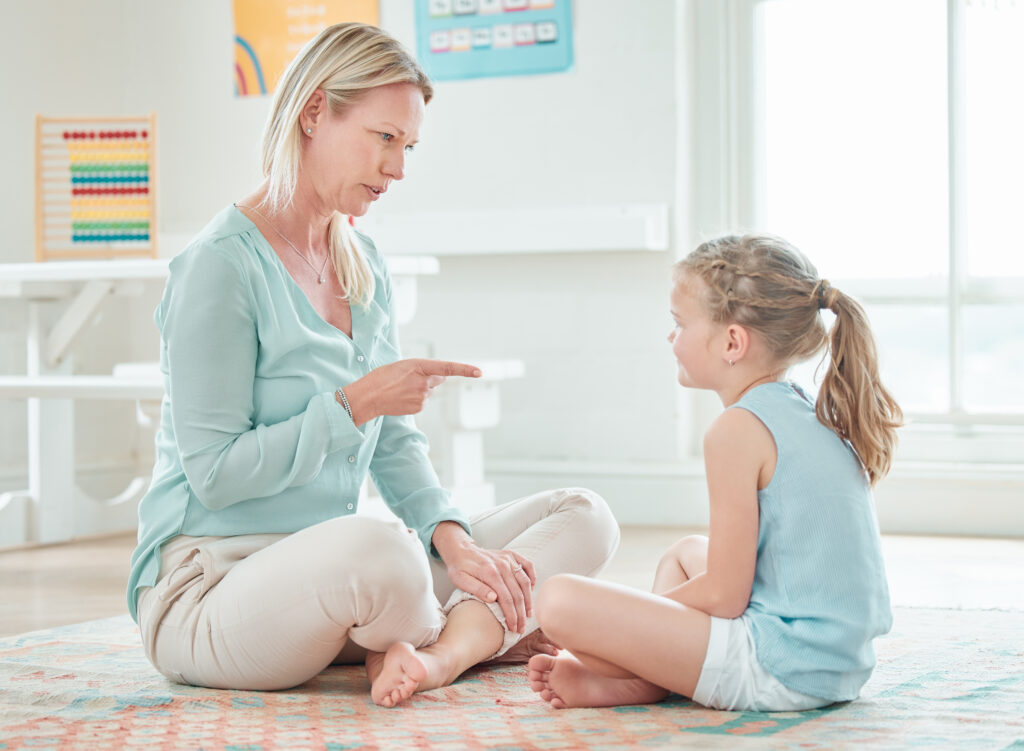
As a Child Development Specialist, I’ve had countless parents sit across from me and whisper the same fear: “I don’t want to be harsh, but I don’t know what else works.” It’s a vulnerable confession—and one that many of us can relate to. The good news? You don’t need punishments to teach your child effectively. In fact, positive discipline strategies for toddlers and older children offer a more compassionate, connected, and science-backed path forward. Positive discipline isn’t permissiveness. It’s structure with empathy. It’s about teaching children how to behave, rather than punishing them for missteps. Here’s how. 1. Connection Before Correction The heart of mindful parenting is presence. Children are more likely to cooperate when they feel seen, heard, and safe. That’s why connection must come before correction. Think of positive discipline as a long-term strategy for relationship-building, not short-term compliance. Instead of yelling “Stop that!” try using Active Listening Parenting tools like, “I see you’re frustrated. Let’s figure this out together.” This approach promotes Emotional Regulation Kids need to thrive—teaching them that all feelings are welcome, but not all behaviors are okay. 2. Set Clear, Consistent Boundaries Positive discipline is firm and kind. It’s not about letting children do whatever they want—it’s about offering age-appropriate boundaries in a way that still honors their dignity. Try creating visual routines for Toddler Activities, or hosting regular Family Meetings to discuss household rules collaboratively. These practices not only make expectations clear but foster a sense of autonomy and responsibility—both key components of Holistic Child Development. When you shift from punishing to teaching, children feel less shame and more motivation to cooperate. And you, as the conscious parent, feel more confident and connected. 3. Model What You Want to See Children learn more from what we do than what we say. That’s why practicing Nonviolent Communication and showing emotional self-regulation in our own reactions is so essential. If we want children to speak respectfully, we must model it. If we want them to apologize sincerely, we must do the same. This isn’t always easy. But embracing conscious co-parenting means reflecting on our own upbringing and being intentional about the behaviors we pass on. The more aware we become of our triggers, the easier it is to respond with grace and not reactivity. And when mistakes do happen? Use them as learning moments. Positive discipline encourages repair over punishment, growth over guilt. Real-Time Research: Why This Matters According to a 2022 study by the American Academy of Pediatrics, children exposed to consistent positive discipline strategies demonstrate 40% fewer behavioral issues and stronger executive functioning than those subjected to punitive methods. When parents learn how to implement conscious parenting techniques at home, children gain long-term skills in empathy, decision-making, and conflict resolution. Conclusion: Discipline as a Teaching Tool If discipline means “to teach,” then let’s teach with love. Let’s give our children tools, not threats. Let’s raise future adults who know not just what to do, but why it matters. Tip: The next time your child acts out, try a “cool-down moment” rather than a timeout. Sit with them. Name their feelings. Co-regulate. You’ll be surprised how quickly connection becomes the greatest corrector.Don’t forget to follow us on Instagram, and YouTube for more insights and expertise.For the latest news and updates, click here to view our recent press releases.
How to Stay Calm When Your Child Is Having a Meltdown
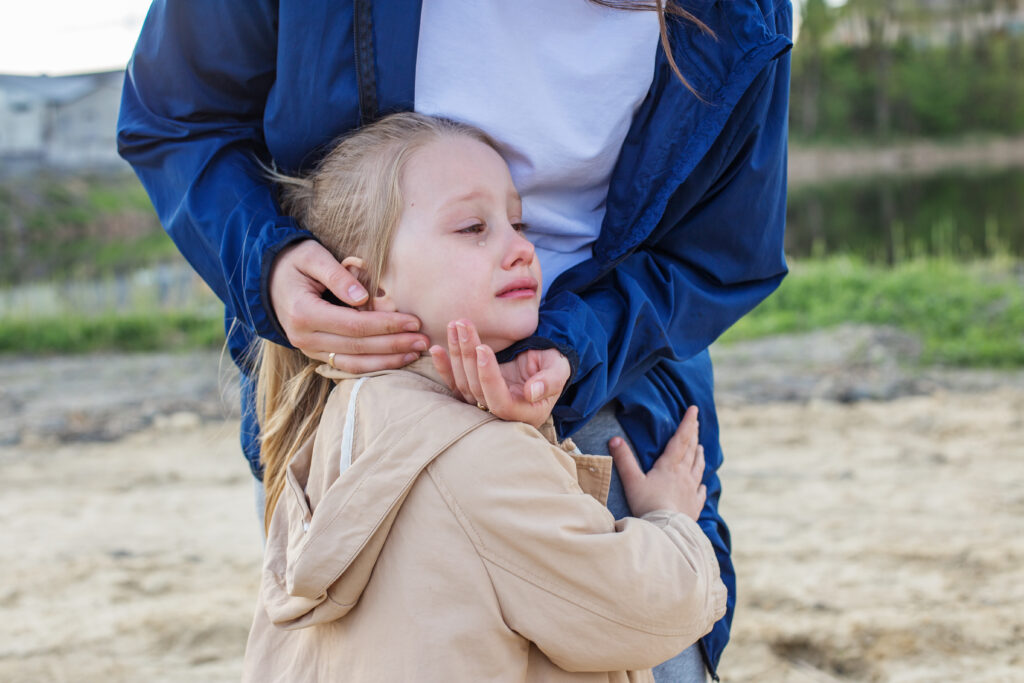
There’s nothing quite as challenging—or humbling—as staying composed when your child is mid-meltdown in the middle of the grocery store. Whether it’s a spilled snack, a denied toy, or “just because,” meltdowns test even the most patient caregivers. But how we respond in these moments matters deeply—not just for our kids, but for our own emotional well-being. As a Child Development Specialist, I’ve seen that these high-stress moments are also powerful opportunities. Opportunities to model emotional regulation, create connection, and embody what it means to be the conscious parent. Let’s talk about how you can stay grounded—even when everything feels like it’s unraveling. 1. Regulate Yourself First: Your Calm Is Contagious Before you can guide your child through their storm, you must anchor yourself. Children subconsciously borrow our nervous systems—if we’re anxious, they escalate. If we stay calm, they begin to regulate. Incorporate mindful parenting techniques like deep breathing or repeating calming mantras such as “My child is having a hard time, not giving me a hard time.” This pause allows you to respond, not react. And yes, it’s okay to take a moment for yourself. Step away briefly (when safe), close your eyes, breathe deep, and ground your feet. You’ll return more present and composed. 2. Empathy Over Explanation When a child is in meltdown mode, logic won’t land. Instead of trying to explain or fix, lean into connection. Get down to their eye level and use Active Listening Parenting tools: “I see you’re really upset. I’m here with you.” This nonjudgmental presence helps your child feel seen and safe. It’s also a practice rooted in Nonviolent Communication, which is key to nurturing trust and co-regulation. Think of these moments as micro Family Meetings—they’re not scheduled, but they’re full of emotional data. They tell you what your child is struggling with, and what they need from you emotionally, not behaviorally. 3. Set Boundaries with Compassion Being calm doesn’t mean being permissive. Children thrive with clear, loving limits. Use positive discipline strategies for toddlers such as “I won’t let you hit, but I’ll help you with those big feelings.” It’s a dance between empathy and boundaries. The goal is to stay connected while guiding. This approach supports Holistic Child Development—meeting their emotional, cognitive, and social needs in the moment. Over time, these small interactions shape your child’s ability to handle frustration, communicate clearly, and develop healthy coping skills. Real-Time Research and Stats According to a 2023 study by the American Psychological Association, children whose parents consistently respond with calmness and connection during emotional outbursts are 60% more likely to develop strong self-regulation skills by age 5. Practicing how to implement conscious parenting techniques at home not only builds emotional safety but also decreases behavioral problems over time. Conclusion: Choose Connection Over Control Parenting isn’t about perfection—it’s about presence. Staying calm during your child’s meltdowns isn’t easy, but it is deeply impactful. Every moment you choose connection over control, empathy over reaction, you lay the foundation for lifelong emotional intelligence. Tip: Create a calm corner at home—a cozy space with soft lighting, favorite books, or sensory items where your child can go to reset when things feel big. Don’t forget to follow us on Instagram, and YouTube for more insights and expertise. For the latest news and updates, click here to view our recent press releases.
Why Your Child’s Behavior Is a Reflection of Your Inner World
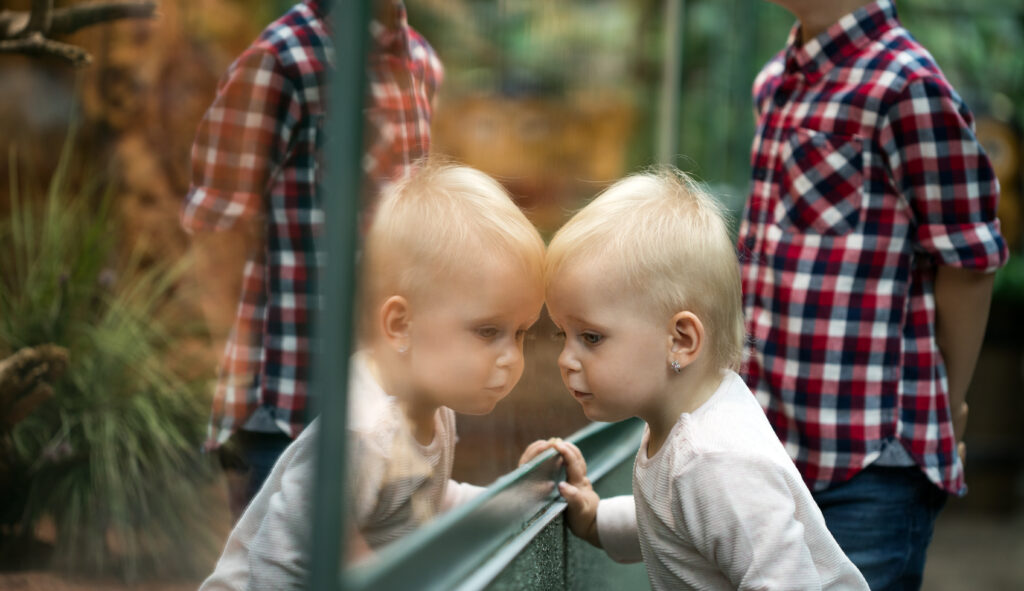
Have you ever noticed your child acting out just as you’re feeling overwhelmed, anxious, or disconnected? It’s not a coincidence. As parents, we are our children’s first environment, and often, their behaviors mirror our internal emotional climate. Understanding this reflection is a cornerstone of mindful parenting—and embracing it can transform your parenting journey into a healing one for both you and your child. As a Child Development Specialist, I’ve worked with countless families navigating this dynamic. The moment a parent begins to turn inward, asking “What is this behavior trying to show me about myself?”, that’s when real breakthroughs happen. Let’s explore how your child’s behavior is a reflection of your inner world—and how you can shift that dynamic with awareness, tools, and compassion. 1. Emotions Are Contagious: Your Calm Is Their Calm Children are incredibly sensitive to emotional energy. If you’re feeling anxious, frustrated, or emotionally unavailable, your child may respond by acting out, withdrawing, or becoming overly clingy. These behaviors aren’t random—they’re responses to an environment they don’t yet know how to verbalize. This is where emotional regulation kids begins—with us. Instead of immediately correcting their behavior, pause and check in with your own body. Are you tense? Distracted? Exhausted? Naming and soothing your own emotion is step one in shifting theirs. This is the benefit of mindful parenting for child development—when we stay grounded, our children feel safer, and their behaviors naturally stabilize. 2. Behavior as Communication: What Are They Really Saying? Behavior is a child’s primary way of communicating unmet needs. If your toddler is throwing tantrums every night at dinner, it might not be about the food—it could be about craving more connection with you. When we take time for intentional connection, such as toddler activities like play-based storytelling or creative expression, we begin to meet those unspoken needs. Tools like Active Listening Parenting can help decode what lies beneath the behavior. Instead of “Why are you being so difficult?”, ask, “What are you trying to tell me right now?” This shift from control to curiosity is what the conscious parent embraces—and it’s often the doorway to healing not just your child’s struggle, but your own childhood echoes as well. 3. Conscious Parenting Changes the Legacy Many of us grew up in homes where emotions were dismissed or discipline meant punishment. But today, parents are empowered to break those cycles. With positive discipline strategies for toddlers, you can set firm, respectful boundaries while preserving emotional connection. For example, saying “I won’t let you hit, but I’m here to help you with your big feelings” teaches both limits and love. And when both caregivers commit to conscious co-parenting, it creates consistency, emotional safety, and powerful modeling for your child. If you’re navigating this with a partner, our Conscious Co-Parenting NJ consultation services are designed to help both of you show up with clarity and unity. Real-Time Insight: The Science Behind the Reflection According to a 2022 study in the Journal of Child Psychology and Psychiatry, children of parents who practice mindful parenting exhibit significantly fewer behavioral issues and higher emotional intelligence. Furthermore, open discussions during regular family meetings foster resilience, communication skills, and mutual understanding within the household. Conclusion: Heal Yourself, Help Your Child Thrive Your child is not trying to give you a hard time—they’re having a hard time. And often, it’s a reflection of our own unspoken emotional landscape. But with curiosity, self-awareness, and a commitment to how to implement conscious parenting techniques at home, you can break old cycles and co-create a more peaceful, connected family experience. Tip: Next time your child acts out, pause and ask: “What’s happening within me right now?” This small moment of reflection can lead to powerful transformation. Don’t forget to follow us on Instagram, and YouTube for more insights and expertise. For the latest news and updates, click here to view our recent press releases.

